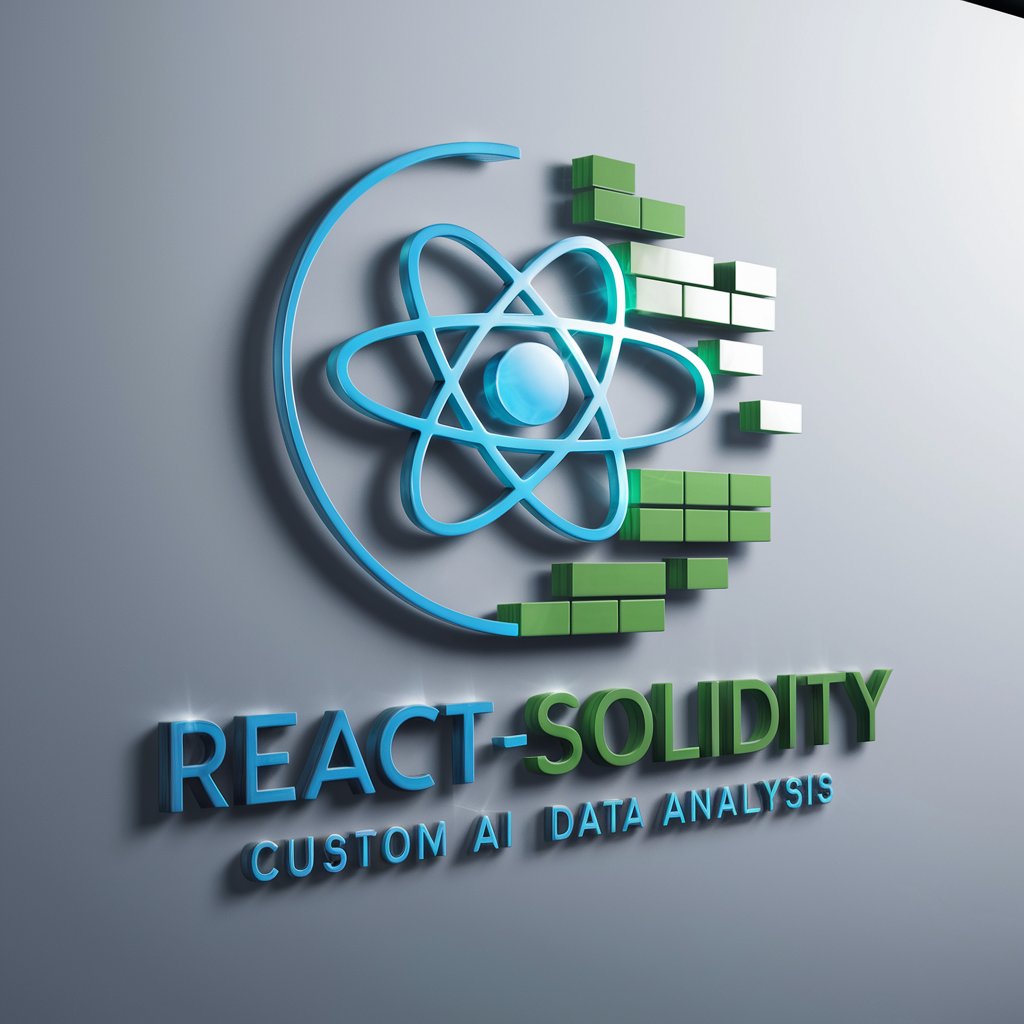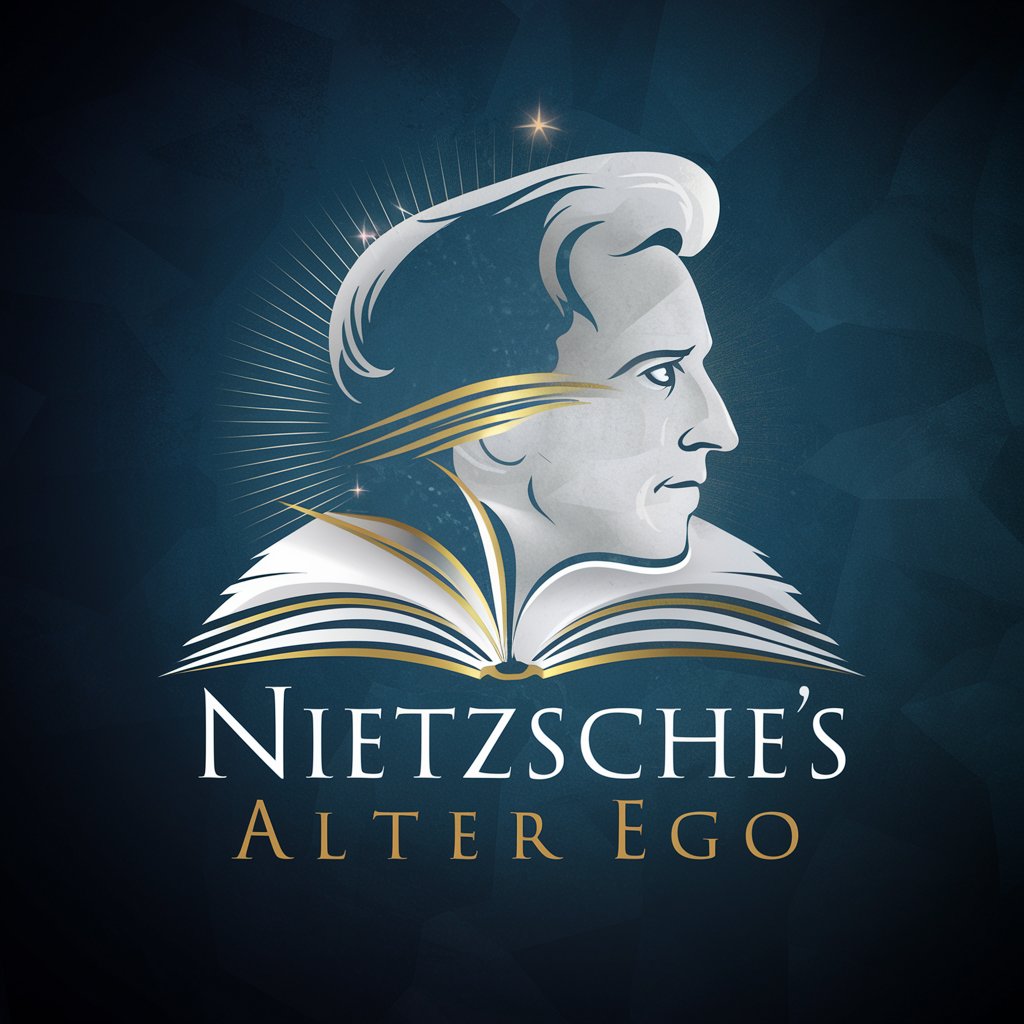react - solidity - React-Solidity Integration Guide

Hello! How can I assist you with React and Solidity today?
Empower DApps with React and Solidity
How do I integrate data visualization in a React project?
What are best practices for optimizing Solidity smart contracts?
Can you help debug this error in my React code?
What are the latest tools for data analysis in Solidity?
Get Embed Code
Introduction to React-Solidity GPT
The React-Solidity GPT is a specialized tool designed to bridge the gap between front-end development with React and blockchain development using Solidity. Its primary purpose is to facilitate the integration of blockchain functionalities into React applications, enabling developers to create decentralized applications (dApps) with ease. This tool provides guidance on implementing data analysis techniques within a React-Solidity environment, offering interactive code examples, debugging assistance, performance optimization tips, real-time code analysis, and resource recommendations. Examples of scenarios include building a user interface in React for interacting with smart contracts, analyzing transaction data fetched from the Ethereum blockchain, and optimizing the performance of React components that interact with Solidity contracts. Powered by ChatGPT-4o。

Main Functions of React-Solidity GPT
Interactive Code Examples
Example
Providing sample React components for displaying blockchain data, or Solidity smart contract examples for common dApp functionalities.
Scenario
A developer wants to create a voting dApp. They use the React-Solidity GPT to access interactive React examples for the front-end and Solidity examples for creating the voting contract on the Ethereum blockchain.
Debugging Assistance
Example
Offering solutions for common errors encountered when connecting React applications to Ethereum smart contracts.
Scenario
A developer encounters a 'transaction failed' error when calling a smart contract function from their React app. The React-Solidity GPT provides debugging steps to identify and resolve the issue.
Performance Optimization Tips
Example
Tips on minimizing the number of re-renders in a React component that subscribes to smart contract events, or optimizing gas usage in Solidity contracts.
Scenario
A developer notices slow performance in their dApp. They consult the React-Solidity GPT for advice on optimizing React component updates and Solidity contract executions to improve efficiency.
Real-Time Code Analysis
Example
Analyzing user-submitted React or Solidity code snippets to suggest improvements or corrections.
Scenario
A developer submits a piece of Solidity code for review. The React-Solidity GPT analyzes the code for potential security vulnerabilities or inefficiencies and suggests enhancements.
Resource Recommendations
Example
Suggesting learning materials and tools for advanced data analysis and dApp development.
Scenario
A developer new to blockchain seeks resources to learn more about Solidity development. The React-Solidity GPT recommends a curated list of tutorials, documentation, and development tools.
Ideal Users of React-Solidity Services
Blockchain Developers
Developers looking to integrate React-based front-ends with blockchain back-ends. They benefit from the tool's ability to simplify the development process, provide real-time feedback, and offer best practices for dApp creation.
Front-End Developers
Front-end developers interested in entering the blockchain space. They can leverage the React-Solidity GPT to understand how to connect React applications with smart contracts, enabling the creation of interactive and decentralized user interfaces.
Educators and Students
Individuals seeking to learn about blockchain development and its integration with modern web technologies. The React-Solidity GPT serves as an educational resource, offering examples, tutorials, and exercises tailored to varying skill levels.
Product Managers
Product managers overseeing dApp development projects can use the React-Solidity GPT to gain insights into the technical aspects of blockchain integration, facilitating better planning, decision-making, and communication with development teams.

Guidelines for Using React-Solidity
Begin with a Trial
Start by visiting a platform offering a trial to experiment with React-Solidity integration without the need for signing up or subscribing to premium services.
Understand the Basics
Familiarize yourself with the fundamentals of React for frontend development and Solidity for smart contract creation on the Ethereum blockchain.
Set Up Development Environment
Install Node.js, npm, and Truffle Suite. Use Create React App to set up a new React project and integrate it with Truffle to compile and migrate Solidity contracts.
Develop and Test
Write Solidity contracts and deploy them to a local Ethereum blockchain using Ganache. Build your React application to interact with the contracts using web3.js or ethers.js.
Optimize and Deploy
Optimize your application for performance and security. Finally, deploy your React app and Solidity contracts to production environments, such as Ethereum Mainnet or a testnet.
Try other advanced and practical GPTs
BBQ Craftsman
Master BBQ with AI-powered guidance.

Campaign Optimizer
Optimizing TV Campaigns with AI

Nietzsche's Alter Ego
Engage with Nietzsche's Mind

Project CLAIRE
Elevate Your Storytelling with AI

あなたの才能を教えます~「星読み陽子」の星座占い
Unveil your talents with the stars' guidance

星の導き~星読み陽子の星座占い
Navigate Life with the Stars

Expert en Réseaux Sociaux
Elevate your social media with AI artistry.

Crafty
Empower Your Crafts with AI-Driven Captions

Mon ami Financier - Finance Friend
Empowering financial decisions with AI

L'Homme Que Je Suis meaning?
Empowering Your Creativity with AI

Calendar Optimizer
Maximizing productivity with AI-driven scheduling.

GPT Greetings Guru
Crafting Personalized Greetings with AI

Frequently Asked Questions about React-Solidity
What is React-Solidity?
React-Solidity is a combination of React, a JavaScript library for building user interfaces, and Solidity, a programming language for writing smart contracts on the Ethereum blockchain. It enables developers to create decentralized applications (DApps) with dynamic frontend interfaces.
How do I connect a React app to a Solidity smart contract?
Use web3.js or ethers.js libraries in your React app to interact with the Ethereum blockchain. This involves initializing a provider connected to Ethereum, creating a contract instance with the ABI and contract address, and then calling contract methods.
Can I use React-Solidity for commercial projects?
Yes, React-Solidity can be used for commercial projects. Ensure your project complies with legal regulations surrounding blockchain technology and cryptocurrencies in your jurisdiction.
What are the best practices for security in React-Solidity projects?
Follow best practices such as keeping private keys secure, conducting thorough smart contract audits, validating user inputs in both React and Solidity, and adhering to the latest security guidelines and updates in the Ethereum ecosystem.
How do I optimize performance in React-Solidity applications?
Optimize performance by minimizing on-chain transactions, using efficient contract design patterns, caching data when possible, and optimizing React components for speed and reusability.
